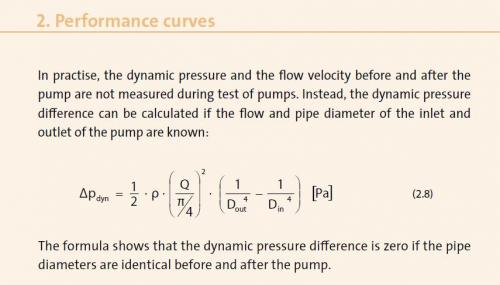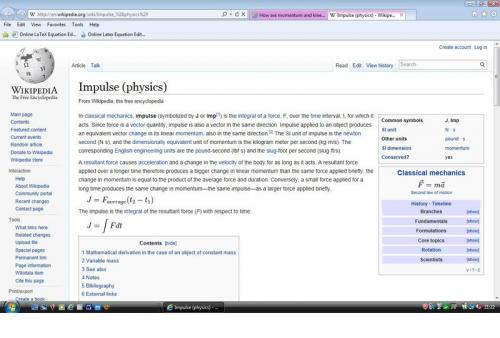-
Posts
17639 -
Joined
-
Last visited
-
Days Won
93
Content Type
Profiles
Forums
Events
Everything posted by studiot
-

Friction forces and motion resulting from them
studiot replied to Robittybob1's topic in Classical Physics
No one fully understands friction, but certain observations can be drawn that facilitate calculations with it. 1) Friction always acts to oppose motion or the tendency to move. 2) Friction has two separate zones of operation. A variable zone called static friction and a fixed zone called dynamic friction. 3) Friction can change (reverse) direction at the point of beginning to move, you mass on a slope has this quality. 4) The force of static friction on an object is only ever enough to oppose an applied force to prevent movement. In the case of zero applied force it is zero. 5) The force of static friction can do no work. 6) The force of dynamic friction does work. 7) The force of dynamic friction is constant regardless of the applied force and less than the applied force. Note on (3) above Suppose the applied force is pulling or pushing the mass up the slope, but the mass is not moving. While the mass on the slope is not moving but being pushed up the slope by the tendency is to slip down the slope, pulled down by gravity. This is static friction and it acts up the slope As soon as the appled force becomes so strong that the mass starts to move upthe slope, the force of friction reverses (opposing the motion) and acts down the slope The friction is now dynamic friction. -
So ask, that's how we find things out. If a (perfectly elastic) ball travelling from left to right hits a wall and bounces horizontally back, It starts with a momentum m in the left to right direction. After bouncing it now has a momentum of (-m) ie in the right to left direction. This is a change of 2m. But its speed has not altered so its KE has not altered. Thinking about the same wall I have already directed a fire hose at it. All the momentum from left to right is destroyed, the water has zero left to right momentum, upon impact. But since it must move away (it does not stick on the side of the wall), it still has some or all of its KE. Please don't get into objects carrying a force. That is the realm of sub atomic physics and so called exchange particles that does not belong in ordinary common or garden classical physics.
-
I don't have the benefit of knowing the history of your question, but a point is a mechanical term whereby the dimensions of the point are negligable compared to the dimensions of the system under consideration. So for instance you would be considered as occupying a point in the surface of the Earth, but the Earth itself would be considered a point in comparison with the Solar System or the Galaxy.
-
Think something travelling round a circle. In the time of one revolution it travels 360o or 2[math]\pi[/math] radians or one circumference ( = 2[math]\pi[/math]r) in distance. The time of one revolution is called the period. Time is the linking quantity between the quantities. So let us say it travels X linear units or Y angular units. (This may be more than one circle or part of one) in a time t. So the objects travels n = Y/360 (degrees) or Y/2[math]\pi[/math] (radians) or X/2[math]\pi[/math]r (linear measure) revolutions in time t. So the object travels n/t revolutions or cycles per second which is the definition of frequency. Equally the object takes t/n seconds to complete one revolution, which is the definition of period.
-

Calling a statement "trash" is not a disproof.
studiot replied to david345's topic in General Philosophy
Father to son "What do you want to be when you grow up?" Son "A full time layabout" -
Yes that is a frequency, although your equation is an unusual rearrangement. Can you also relate this to angular velocity in radians per second ? Going back to dimensional analysis. Work is Force times distance = (MLT-2) x (L) = ML2T-2 Potential energy is mass times height times g or M x L x (LT-2) = ML2T-2 This shows that work and energy have the same units, a useful result.
-
I'm glad it helped and I see no reason for the discouraging negative so +1. No after checking carefully (since I make too many typos) this is correct. All I have done is said mass times velocity and put in M (for mass) times (the dimensions I worked out earlier for velocity). Is that any clearer?
-
The three basic quantities in mechanics are Mass - symbol M Length - symbol L Time - symbol T All other mechanical quantities can be expressed by combinations of these three. These three are called 'dimensions' and combinations are called 'units'. This makes it easy to compare them and check for consistency. so for instance velocity = distance/time which has the dimensions LT-1 and units of miles per hour or metres per second. volume is L3 and area L2 or cubic metres and square metres. As a little extra: Force is rate of change of linear momentum Torque is rate of change of angular momentum Linear momentum is mass times velocity or mass times (LT-1) or MLT-1 So force the dimensions of force is momentum per unit time or MLT-2 How are we doing?
-
Once again see my post2
-
Sorry to hear that. Don't think I saw that video but it sound as though the author was trying to be 'clever' and complicated. I recommend sticking to the ball and string. To get the ball going as you say you start off by dragging it in a line with the string. You then give it a second yank sideways to the motion to divert it from that line into a curved path. You repeat this as many times as necessary to get it swinging round. The first initial pull is linear and the tension in the string has no special name. The sideways pull is still tension but is now called centripetal force. But this is where the problems start. No inertia was not 'given to the ball', it is an inherent property of the ball (or any other piece of matter). It cannot be given to anything, and equally it cannot be taken away. Inertia is measured by mass. It is not momentum, but as swansont said backalong, it is one part of momentum, the other being velocity. You haven't made any comment or asked any questions about momentum in my post 37 ? This was meant to be encouraging BTW.
-
tar, I just read and commented in the centrifugal thread and I thought you had cracked it. You seem to have forgotten that 1) It is possible for a body to loose all its momentum, whilst its KE remains unchanged. 2) It is possible for a body to gain double its momentum, whilst its KE is unchanged. Does that sound like they are directly related? Yes they are related, they both belong to or are attributable to the same body. But that is not quite the answer you are seeking.
-
It is a pity some fool chose to formalise the definition of the word action in physics, he was a jerk. I can't now say that there are several mechanisms that action (in the general english sense) can be transferred from one place to another and impulse would certainly be one of them. But impulse is tricky and not the main subject of this thread. That is why I have discontinued our cordial discussion on that subject here. However I would be happy to continue in a brand spanking new thread, designed expressly for that purpose, if you so wish. We could discuss examples of fire hoses, jack-in-the-boxes and sledge hammers and the impulse-momentum theorem there. Perhaps tar might also read it and derive something of value.
-
Perhaps you mean multistage pumps? Here is an extract from the Grundfoss centrifugal water pump design manual. This speaks for itself
-
Since when was scrolling a valid integration technique? There it is, writ large at the head of their page, like a banner for all to see. An indefinite integral that needs an arbitrary constant to complete the integration. But that is irrelevant to the point I made that the impulsive force has a beginning and an end. That is what makes it different from say, gravity.
-
I have these two images in my head. The first is of a graceful skater spreading her arms wide ashe she travels the ice into a turn. Then bringing her arms in close to her body thus speeding up her rotation rate. Moment of momentum is conserved. The second is of a hairy Orc from Lord of the Rings sharpening a huge knife on an enormous grindstone, sparks flying everywhere. He is sweating profusely from having to work really hard as he presses the knife firmly against the edgge of the stone, maintaining the moment of momentum lost to friction.
-
-
Unless parts of a body or system of particles possess linear momentum there can be no "moment of momentum", and even then there may be none because it means that the angular momentum is the sum of the products of all the linear momenta with their lever arm about some axis.
-
Don't forget that angular momentum is not the same as linear momentum. The dimensions are different. Linear momentum MLT-1 Angular momentum ML2T-1 The extra L is why the old and alternative name for angular momentum is moment of momentum, which some consider more descriptive and less confusing.
-
Perhaps I was just being kind to Wikipedia? Defining impulse as the indefinite integral of Fdt is meaningless. Impulse is properly defined as the definite integral [math]I = \int_{t2}^{t1}F.dt[/math] The point is that it has a begining and and end. The disturbance travelling through the elastic media does not necessarily have either.




